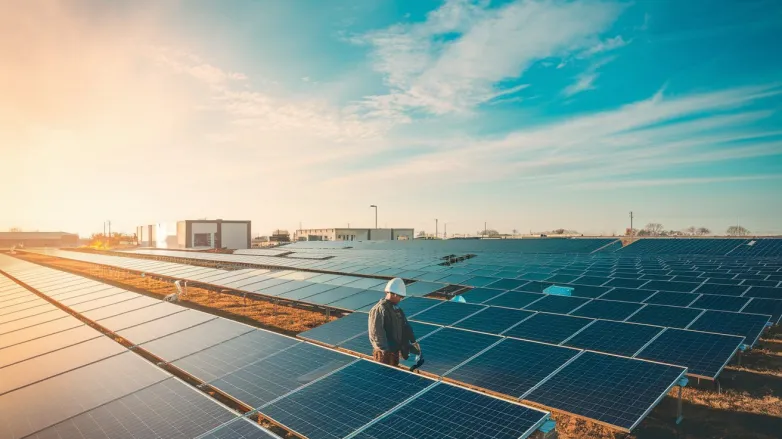India's Solar Capacity Surges to 12.8 GW in H1 2024
- India’s solar boom soared to 12.8 GW in H1 2024, marking a staggering 228.3% rise and powering the nation’s green energy future!

India's solar capacity installations reached 12.8 GW in the first half of 2024, representing a remarkable 228.3% increase compared to the same period in 2023. This surge brought the country's cumulative solar capacity to 85.5 GW by June 2024. The growth was primarily driven by the completion of previously delayed projects and a significant decline in module prices, with over 10 GW installed in the first quarter alone. Of the new installations, 11.7 GW were large-scale, while 1.1 GW were rooftop solar.
Adani Green Energy led the sector as the top utility-scale solar developer, followed by ReNew and O2 Power. The top ten developers accounted for 76.8% of the new capacity. Additionally, Tata Power Solar topped rooftop installations and EPC services. The report indicated a healthy development pipeline, with 126.1 GW of large-scale projects in progress and 103.8 GW in pending tenders. Open access solar capacity also saw a notable increase of 119.6%, with AM Green Energy as the leading developer.
What factors contributed to India's record solar capacity growth in early 2024?
Here are some key factors that contributed to India's remarkable solar capacity growth in early 2024:
- Completion of Delayed Projects: The significant increase in capacity can be attributed to the completion of several large-scale projects that had previously faced delays, streamlining the process of bringing new capacity online.
- Reduction in Solar Module Prices: A sharp decline in the prices of solar modules played a pivotal role, making solar installations more affordable and attractive for both developers and consumers.
- Policy Support and Government Initiatives: The Indian government has implemented favorable policies and incentives aimed at promoting renewable energy, which includes streamlined approval processes and financial support for solar projects.
- Increase in Investment: There has been a surge in domestic and foreign investments in the solar sector, driven by confidence in India’s renewable energy market and the long-term returns associated with solar energy projects.
- Collaborations and Partnerships: Strategic collaborations between developers, technology providers, and financial institutions helped expedite project execution and resource allocation, contributing to quicker project completions.
- Strong Developer Performance: The dominance of key developers such as Adani Green Energy and ReNew, who effectively manage large portfolios and drive innovation, fueled competitive growth in the sector.
- Expansion of Rooftop Solar Market: The rooftop solar segment experienced growth due to increased awareness, favorable net metering policies, and energy conservation strategies adopted by residential and commercial sectors.
- Technological Advancements: Improvements in solar technology, including higher efficiency modules and better energy storage solutions, made solar projects more viable and cost-effective.
- Enhancement of Grid Infrastructure: Investments in the upgrade and expansion of grid infrastructure facilitated the integration of increased solar capacity, ensuring that produced energy can be effectively distributed and utilized.
- Supporting Regulatory Framework: The establishment of policies promoting open access solar energy arrangements enabled businesses and industries to utilize solar energy directly, enhancing overall capacity growth.
- Rising Energy Demand: India’s growing energy needs, driven by urbanization and industrialization, created an urgent demand for sustainable and reliable energy sources, pushing solar energy to the forefront.
- Sustainability Goals and International Commitments: India's commitment to sustainability and international clean energy goals bolstered efforts to expand solar capacities, as part of a broader strategy to meet carbon reduction targets.
These factors combined have not only contributed to the remarkable growth of solar capacity in India but have also set the stage for continued advancements in the renewable energy landscape.
Also read


